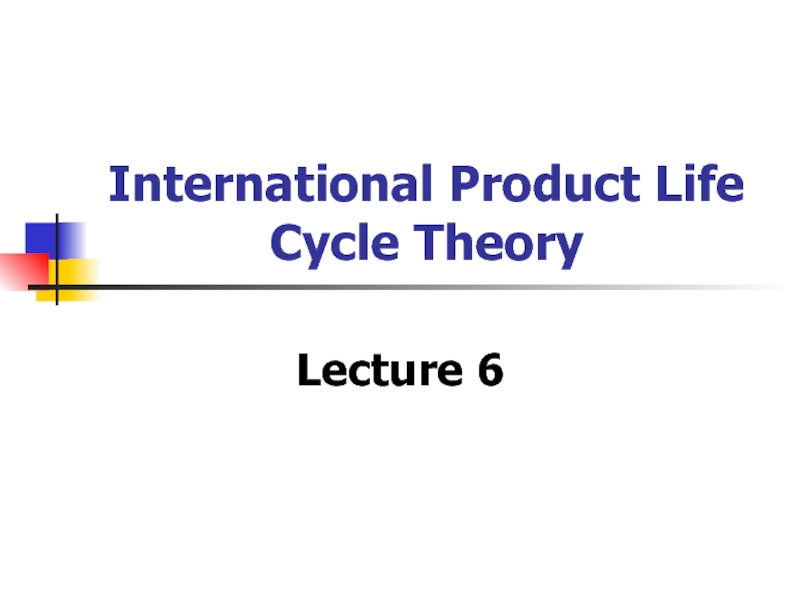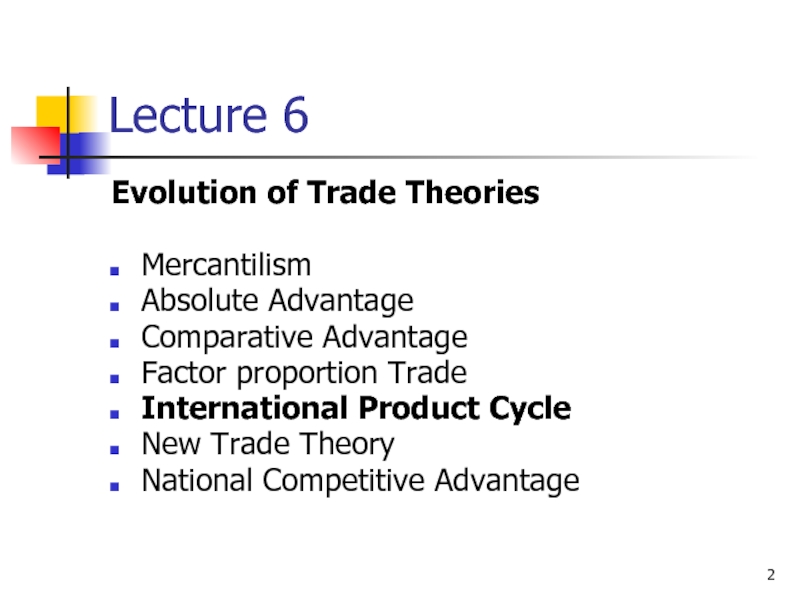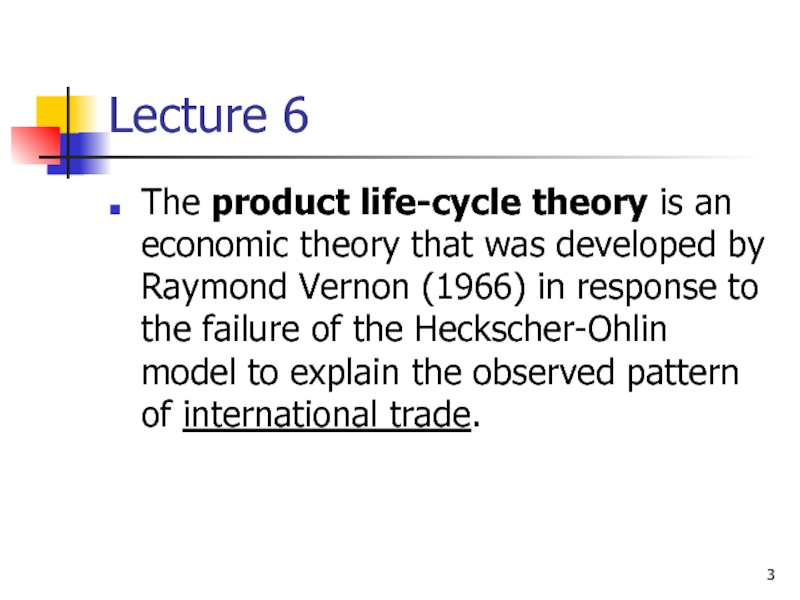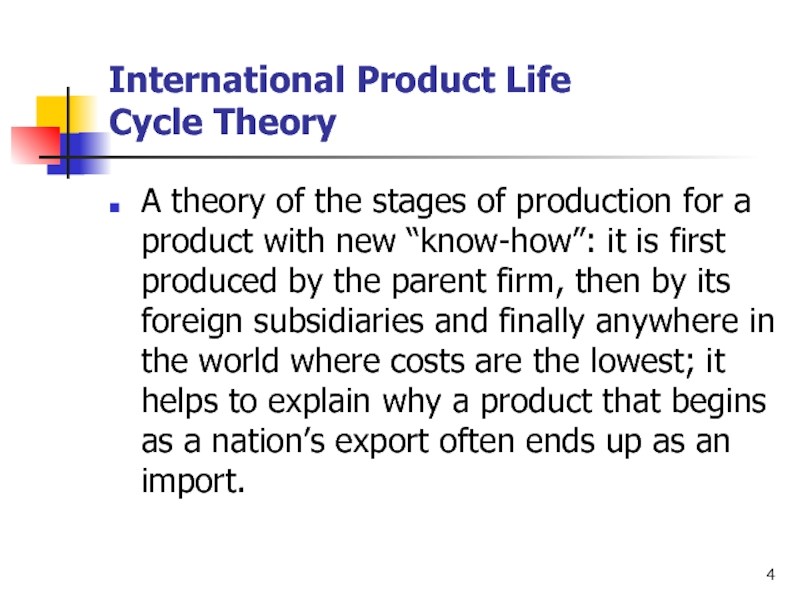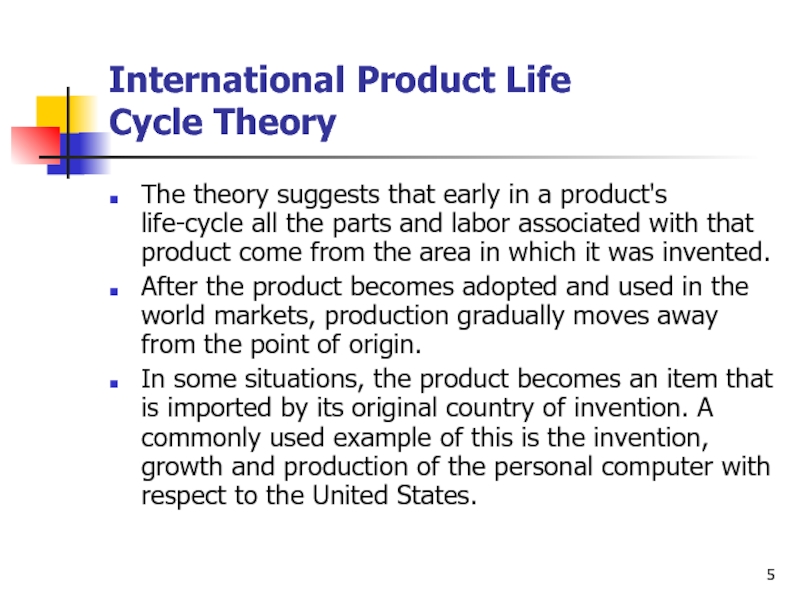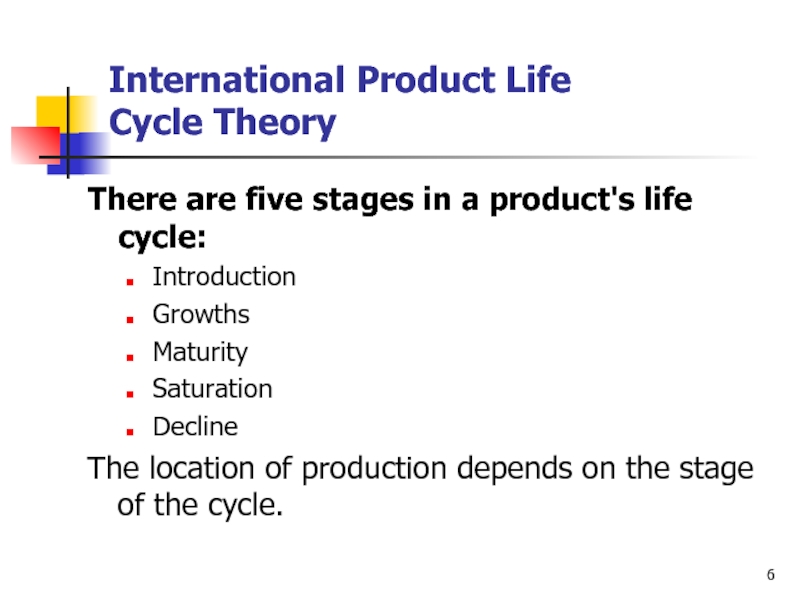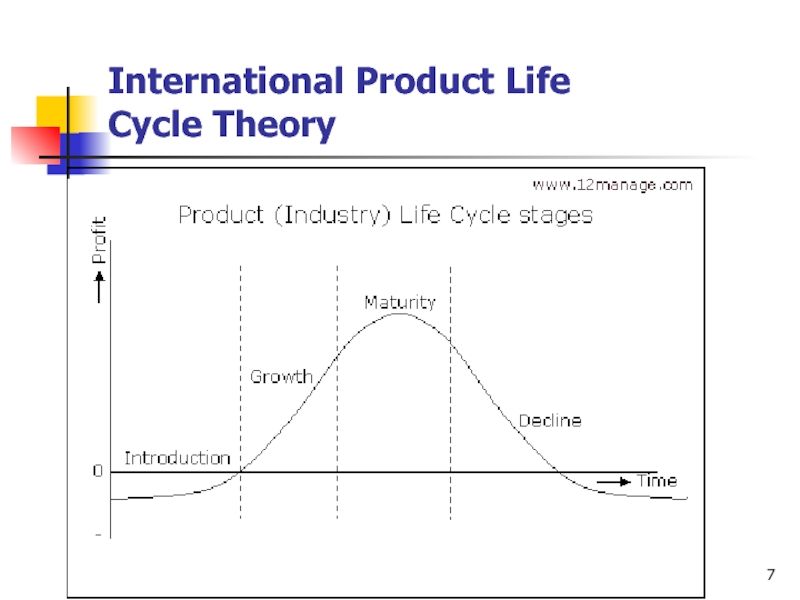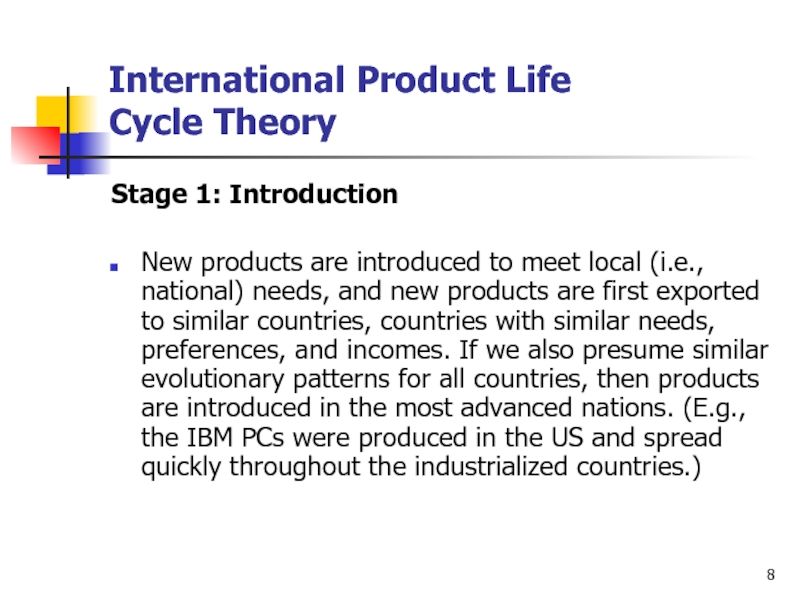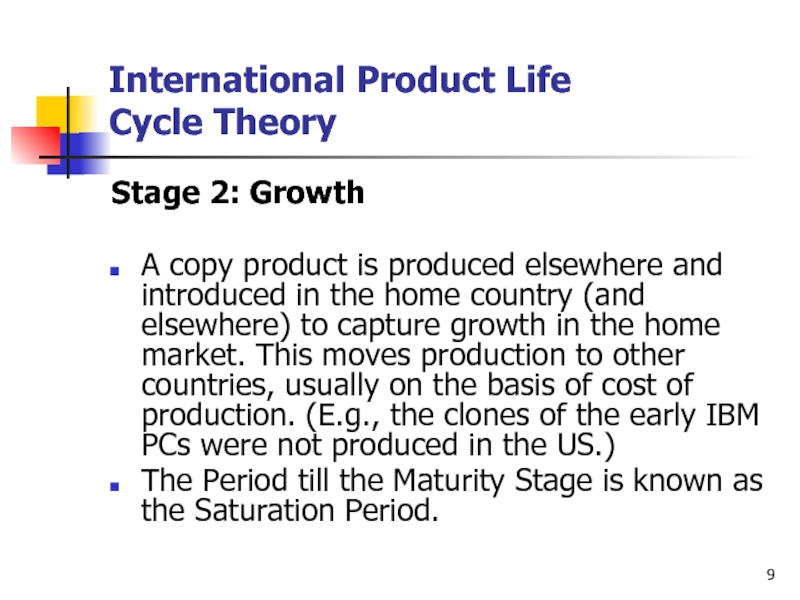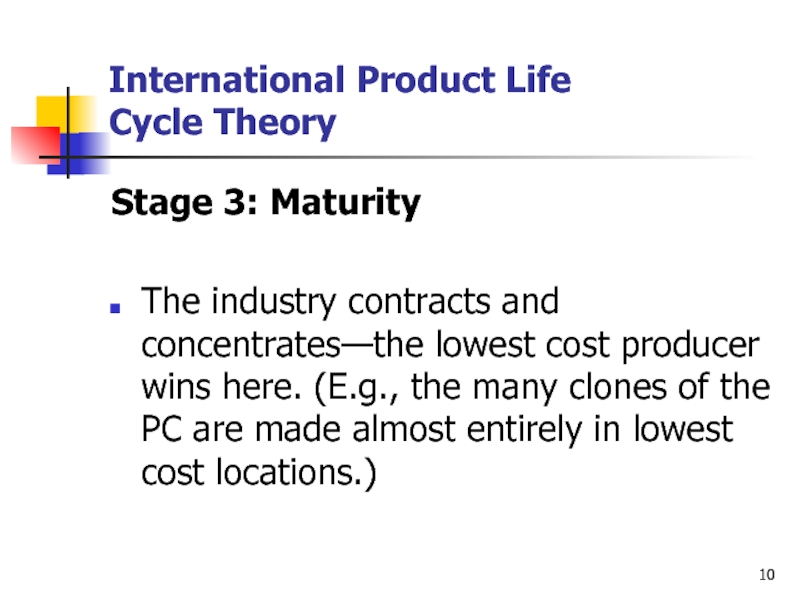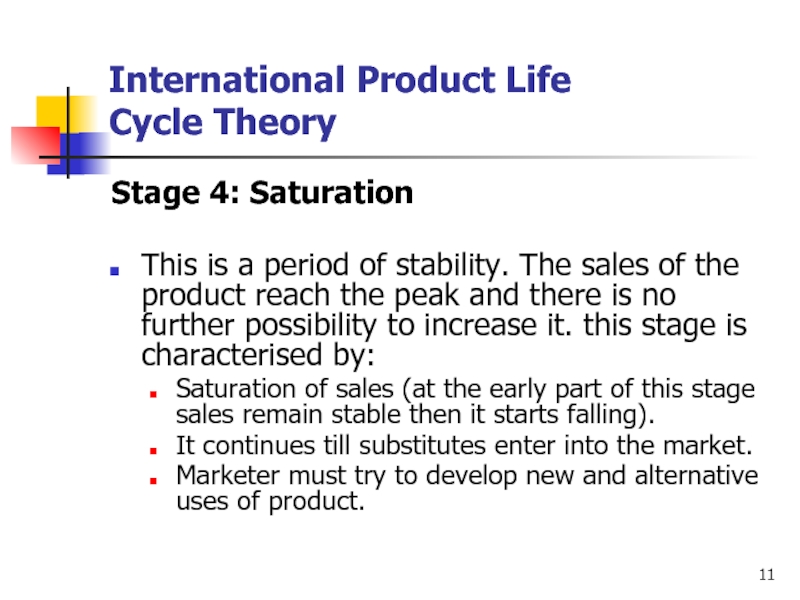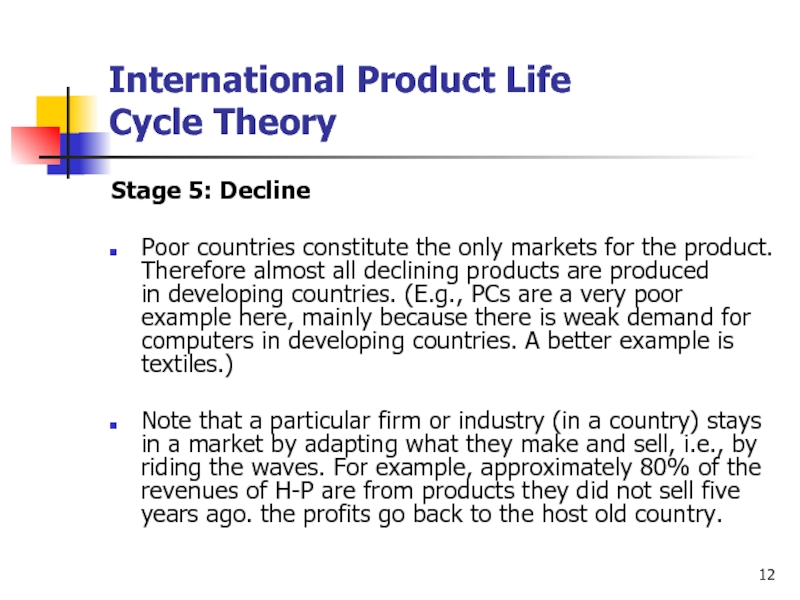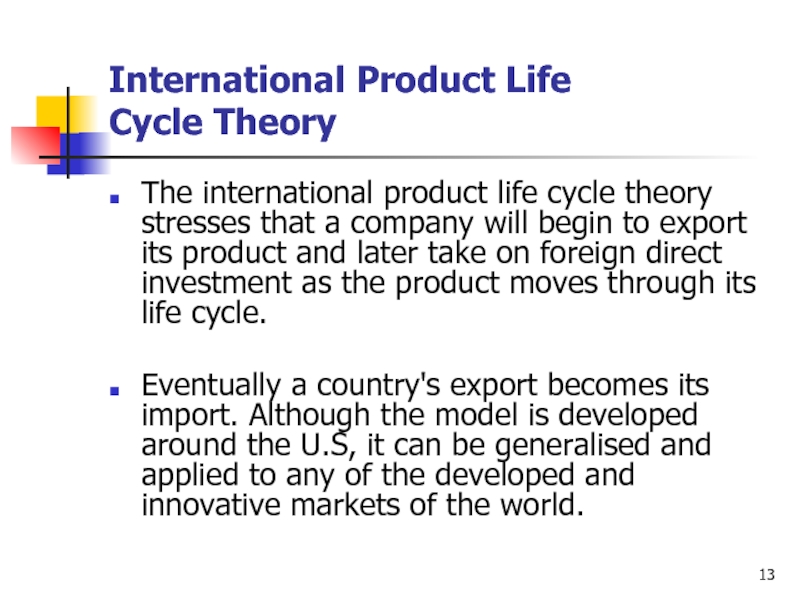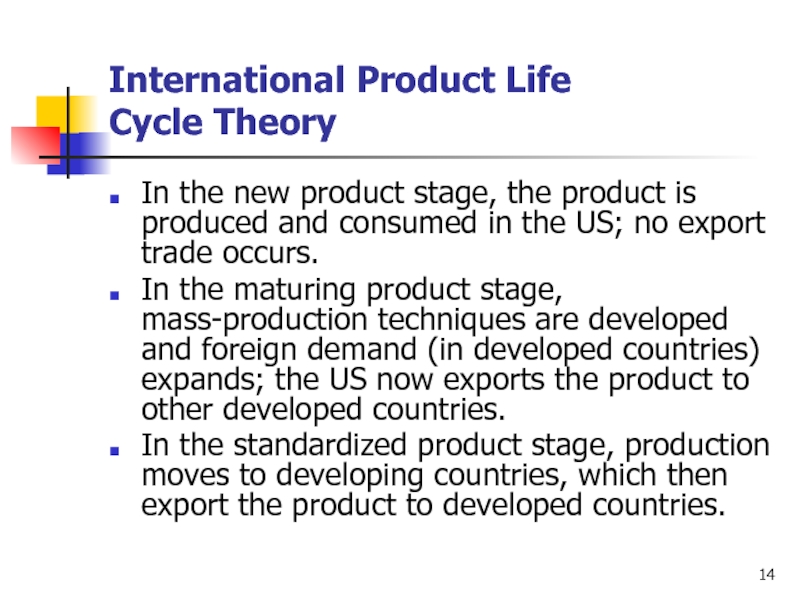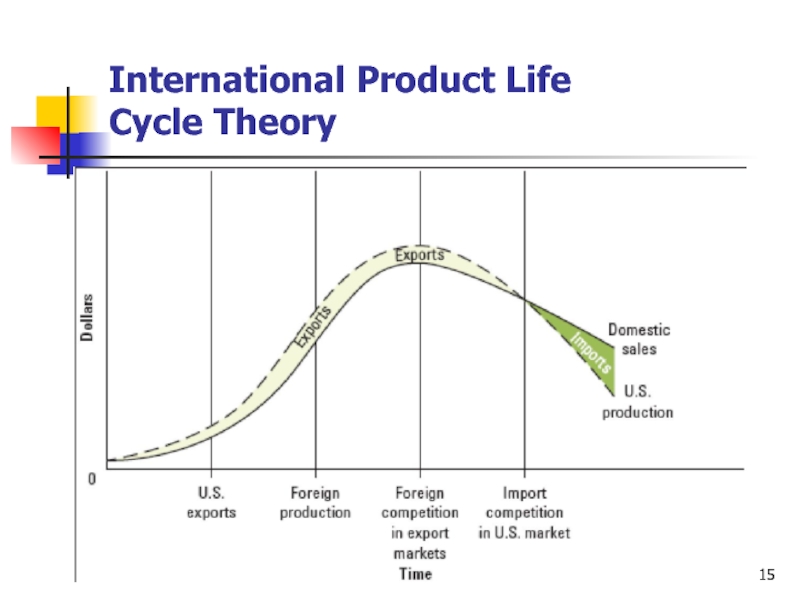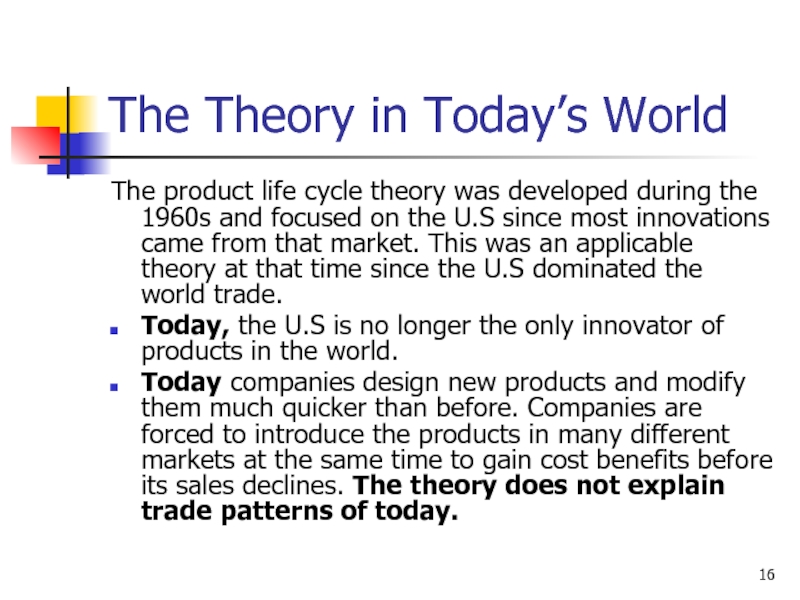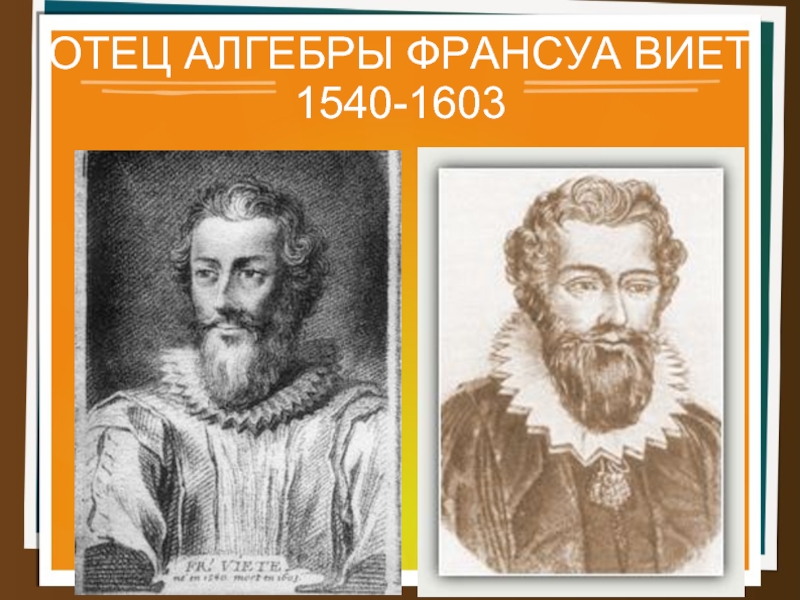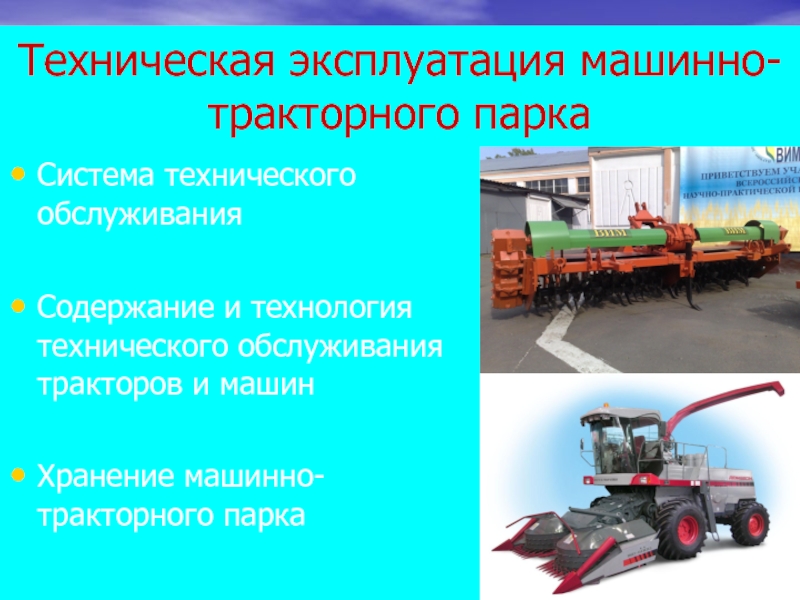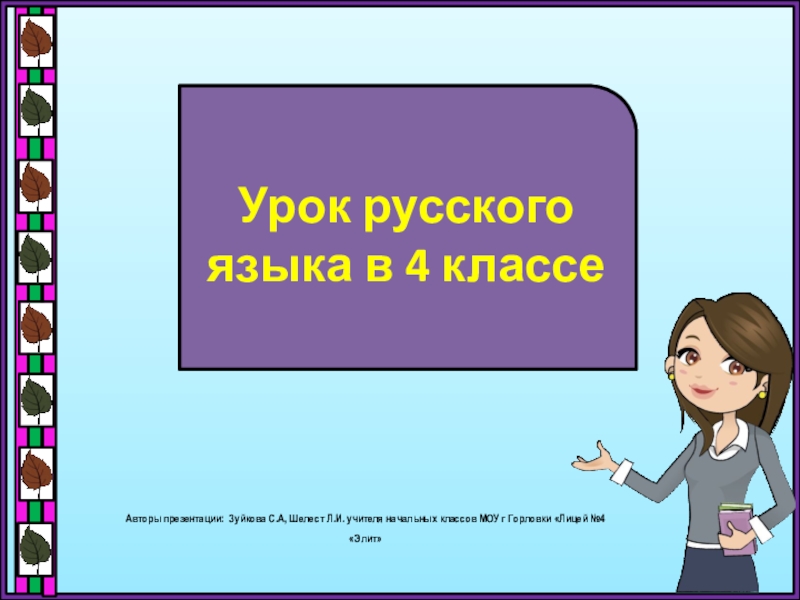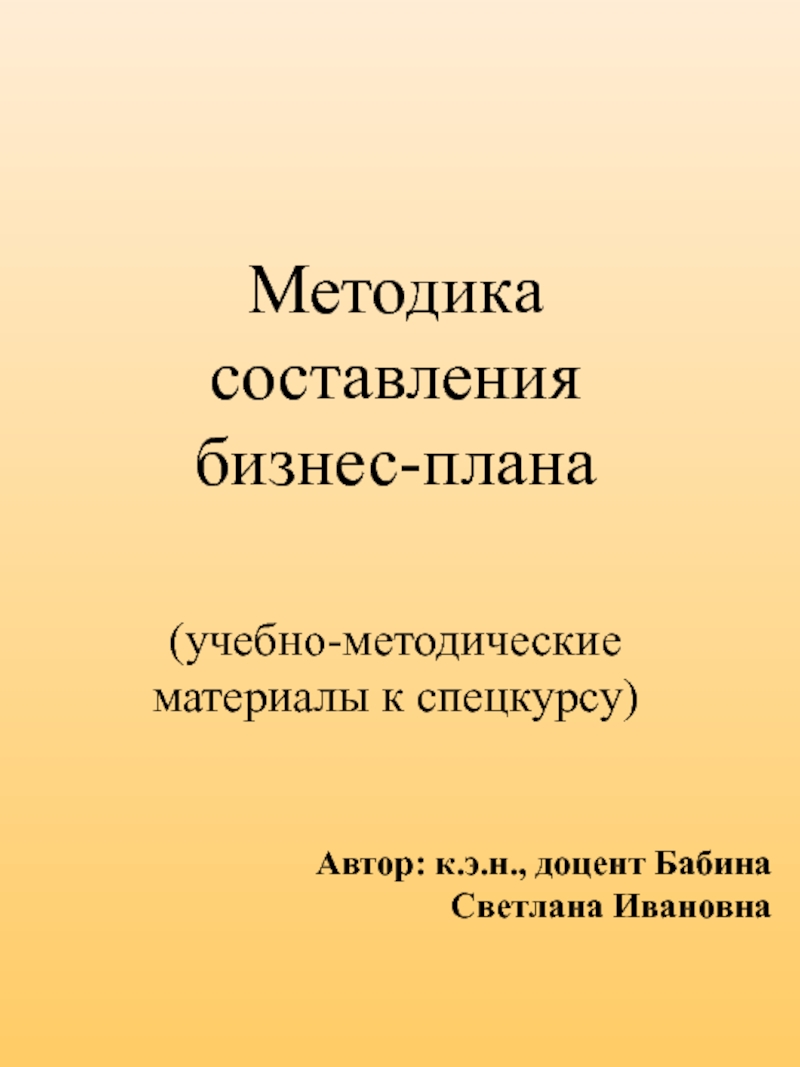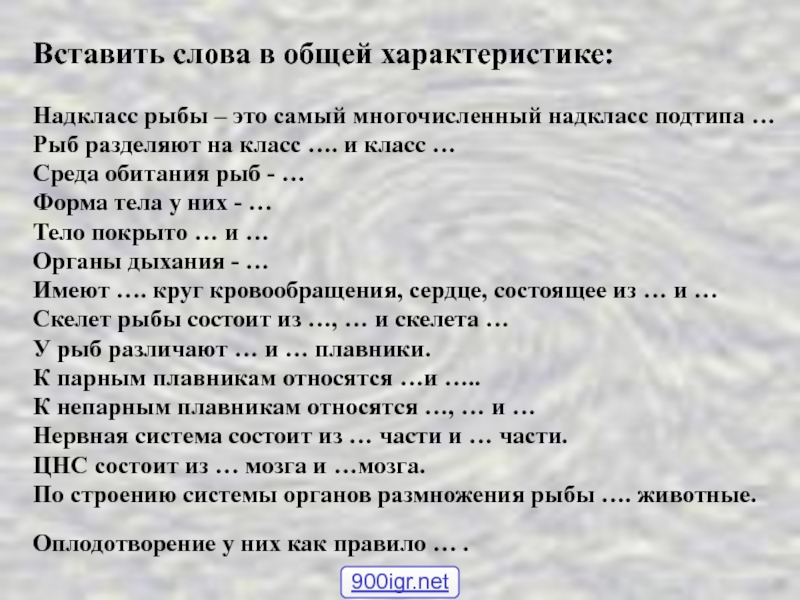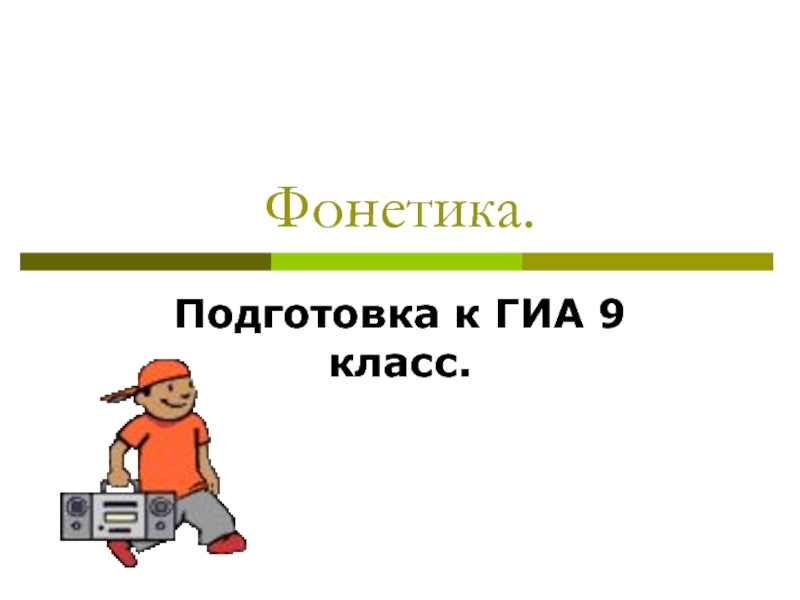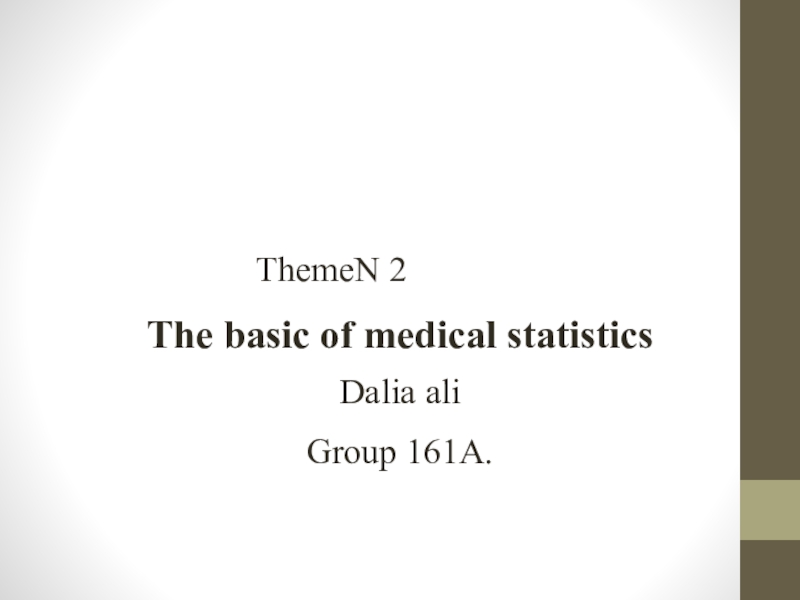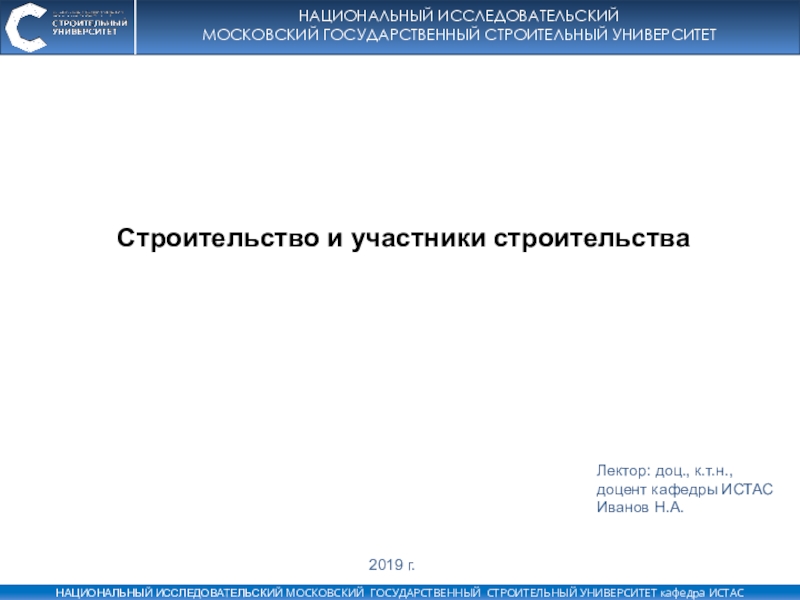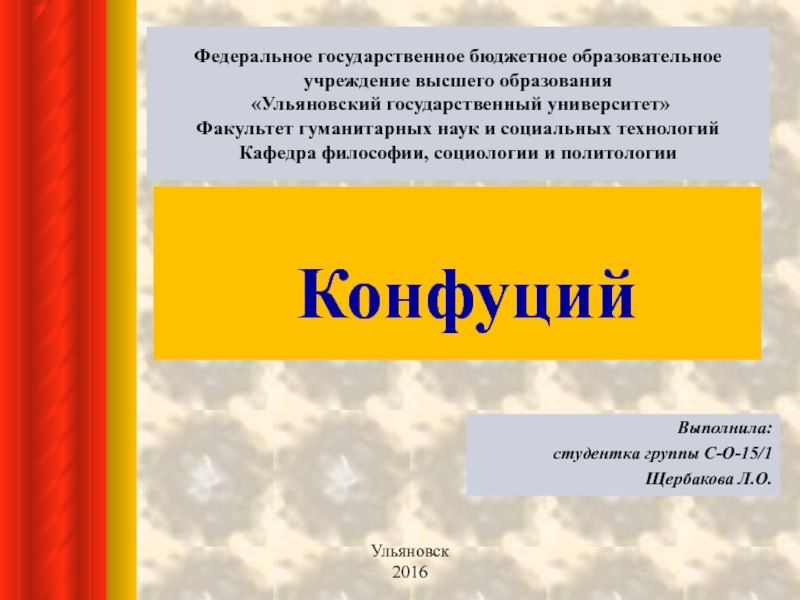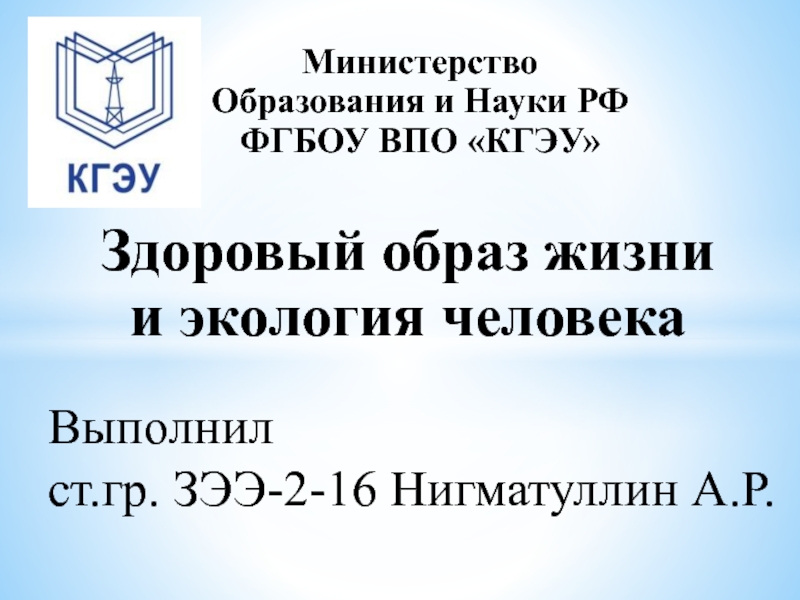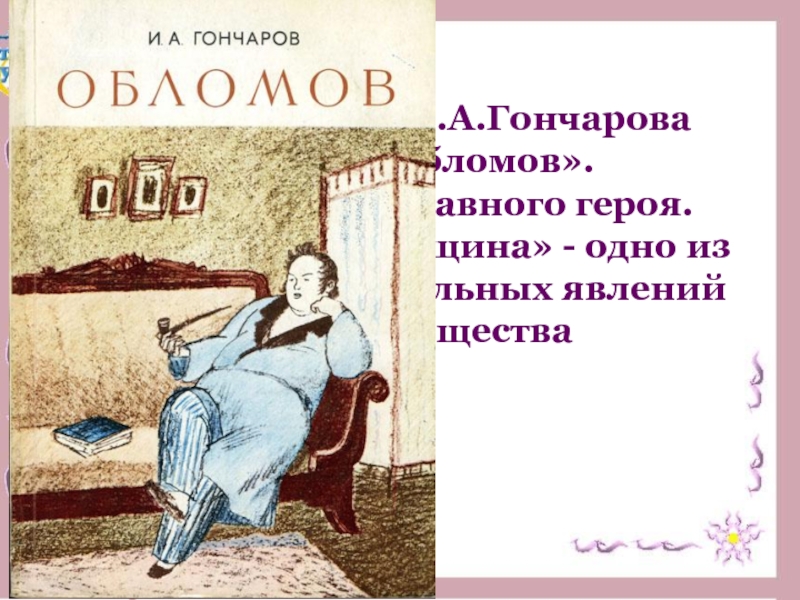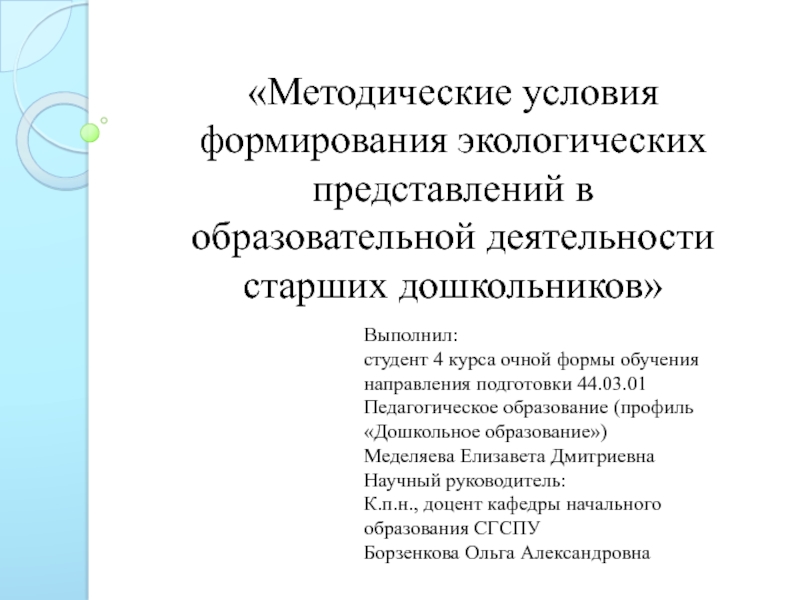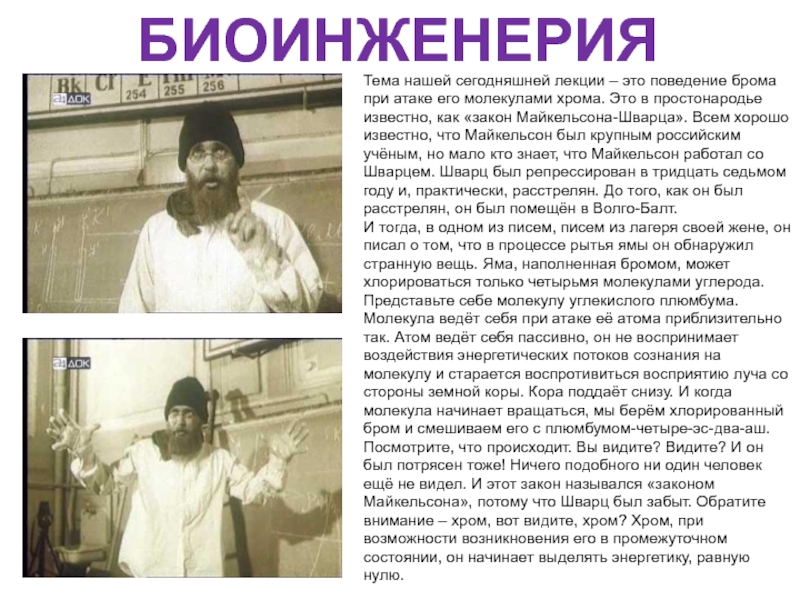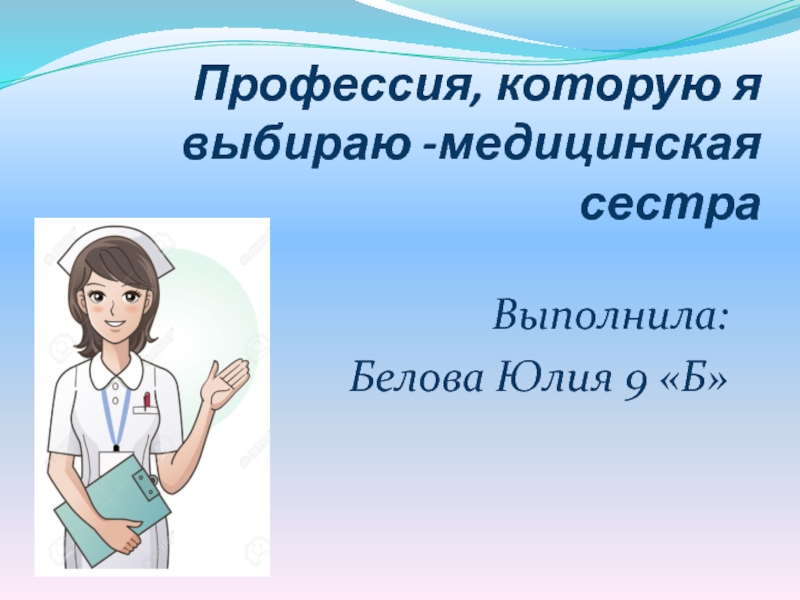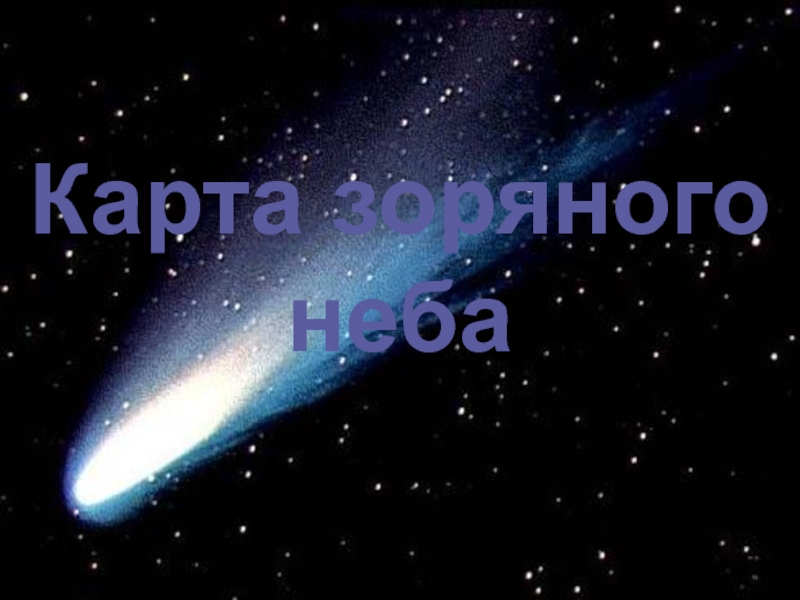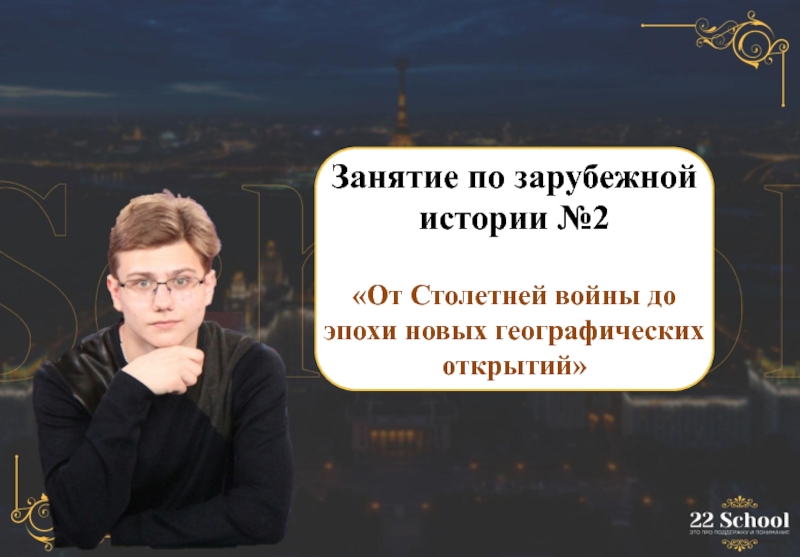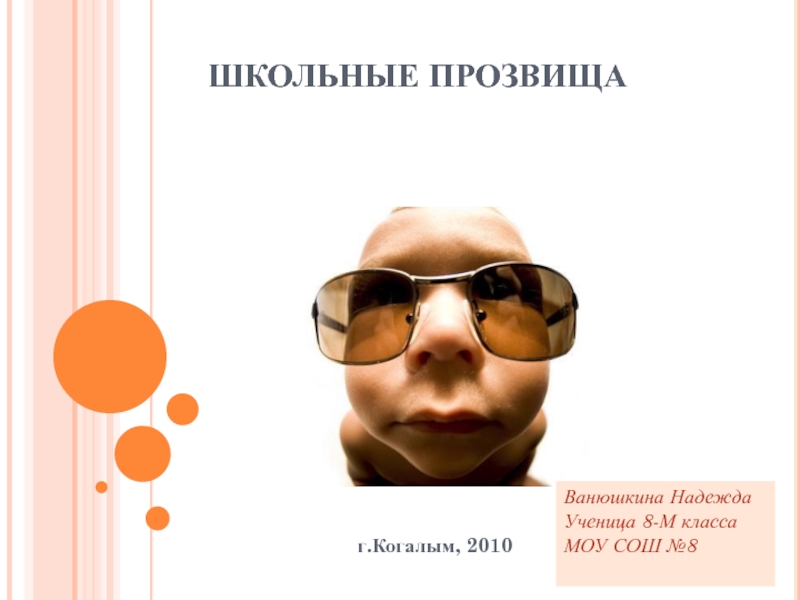Разделы презентаций
- Разное
- Английский язык
- Астрономия
- Алгебра
- Биология
- География
- Геометрия
- Детские презентации
- Информатика
- История
- Литература
- Математика
- Медицина
- Менеджмент
- Музыка
- МХК
- Немецкий язык
- ОБЖ
- Обществознание
- Окружающий мир
- Педагогика
- Русский язык
- Технология
- Физика
- Философия
- Химия
- Шаблоны, картинки для презентаций
- Экология
- Экономика
- Юриспруденция
International Product Life Cycle Theory
Содержание
- 1. International Product Life Cycle Theory
- 2. Lecture 6Evolution of Trade TheoriesMercantilismAbsolute AdvantageComparative Advantage Factor proportion TradeInternational Product CycleNew Trade TheoryNational Competitive Advantage
- 3. Lecture 6The product life-cycle theory is an economic theory
- 4. International Product Life Cycle TheoryA theory
- 5. International Product Life Cycle TheoryThe theory
- 6. International Product Life Cycle TheoryThere are
- 7. International Product Life Cycle Theory
- 8. International Product Life Cycle TheoryStage 1:
- 9. International Product Life Cycle TheoryStage 2:
- 10. International Product Life Cycle TheoryStage 3:
- 11. International Product Life Cycle TheoryStage 4:
- 12. International Product Life Cycle TheoryStage 5:
- 13. International Product Life Cycle TheoryThe international
- 14. International Product Life Cycle TheoryIn the
- 15. International Product Life Cycle Theory
- 16. The Theory in Today’s WorldThe product life
- 17. Слайд 17
- 18. Скачать презентанцию
Lecture 6Evolution of Trade TheoriesMercantilismAbsolute AdvantageComparative Advantage Factor proportion TradeInternational Product CycleNew Trade TheoryNational Competitive Advantage
Слайды и текст этой презентации
Слайд 2Lecture 6
Evolution of Trade Theories
Mercantilism
Absolute Advantage
Comparative Advantage
Factor proportion Trade
International
Product Cycle
Слайд 3Lecture 6
The product life-cycle theory is an economic theory that was developed
by Raymond Vernon (1966) in response to the failure of
the Heckscher-Ohlin model to explain the observed pattern of international trade.Слайд 4International Product Life
Cycle Theory
A theory of the stages of
production for a product with new “know-how”: it is first
produced by the parent firm, then by its foreign subsidiaries and finally anywhere in the world where costs are the lowest; it helps to explain why a product that begins as a nation’s export often ends up as an import.Слайд 5International Product Life
Cycle Theory
The theory suggests that early in
a product's life-cycle all the parts and labor associated with
that product come from the area in which it was invented.After the product becomes adopted and used in the world markets, production gradually moves away from the point of origin.
In some situations, the product becomes an item that is imported by its original country of invention. A commonly used example of this is the invention, growth and production of the personal computer with respect to the United States.
Слайд 6International Product Life
Cycle Theory
There are five stages in a
product's life cycle:
Introduction
Growths
Maturity
Saturation
Decline
The location of production depends on the stage
of the cycle.Слайд 8International Product Life
Cycle Theory
Stage 1: Introduction
New products are introduced
to meet local (i.e., national) needs, and new products are
first exported to similar countries, countries with similar needs, preferences, and incomes. If we also presume similar evolutionary patterns for all countries, then products are introduced in the most advanced nations. (E.g., the IBM PCs were produced in the US and spread quickly throughout the industrialized countries.)Слайд 9International Product Life
Cycle Theory
Stage 2: Growth
A copy product is
produced elsewhere and introduced in the home country (and elsewhere)
to capture growth in the home market. This moves production to other countries, usually on the basis of cost of production. (E.g., the clones of the early IBM PCs were not produced in the US.)The Period till the Maturity Stage is known as the Saturation Period.
Слайд 10International Product Life
Cycle Theory
Stage 3: Maturity
The industry contracts and
concentrates—the lowest cost producer wins here. (E.g., the many clones
of the PC are made almost entirely in lowest cost locations.)Слайд 11International Product Life
Cycle Theory
Stage 4: Saturation
This is a period
of stability. The sales of the product reach the peak
and there is no further possibility to increase it. this stage is characterised by:Saturation of sales (at the early part of this stage sales remain stable then it starts falling).
It continues till substitutes enter into the market.
Marketer must try to develop new and alternative uses of product.
Слайд 12International Product Life
Cycle Theory
Stage 5: Decline
Poor countries constitute the
only markets for the product. Therefore almost all declining products
are produced in developing countries. (E.g., PCs are a very poor example here, mainly because there is weak demand for computers in developing countries. A better example is textiles.)Note that a particular firm or industry (in a country) stays in a market by adapting what they make and sell, i.e., by riding the waves. For example, approximately 80% of the revenues of H-P are from products they did not sell five years ago. the profits go back to the host old country.
Слайд 13International Product Life
Cycle Theory
The international product life cycle theory
stresses that a company will begin to export its product
and later take on foreign direct investment as the product moves through its life cycle.Eventually a country's export becomes its import. Although the model is developed around the U.S, it can be generalised and applied to any of the developed and innovative markets of the world.
Слайд 14International Product Life
Cycle Theory
In the new product stage, the
product is produced and consumed in the US; no export
trade occurs.In the maturing product stage, mass-production techniques are developed and foreign demand (in developed countries) expands; the US now exports the product to other developed countries.
In the standardized product stage, production moves to developing countries, which then export the product to developed countries.
Слайд 16The Theory in Today’s World
The product life cycle theory was
developed during the 1960s and focused on the U.S since
most innovations came from that market. This was an applicable theory at that time since the U.S dominated the world trade.Today, the U.S is no longer the only innovator of products in the world.
Today companies design new products and modify them much quicker than before. Companies are forced to introduce the products in many different markets at the same time to gain cost benefits before its sales declines. The theory does not explain trade patterns of today.
